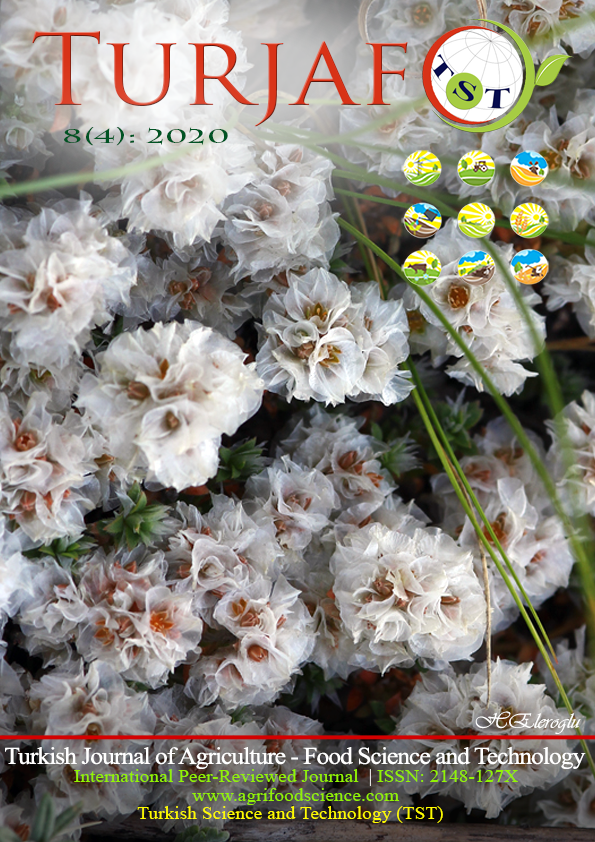Effects of Gibberellic Acid and Salicylic Acid Applications on Some Physical and Chemical Properties of Rapeseed (Brassica napus L.) Grown Under Salt Stress
DOI:
https://doi.org/10.24925/turjaf.v8i4.873-881.3044Keywords:
Brassica napus L, , Electrolyte leakage, Rapeseed, Salt stress, Turgor lossAbstract
In agricultural production, one of the limiting factors on plant growth and yield is soil salinity. The plant growth regulators are of considerable importance in alleviating the negative effect of salt stress. The study was carried out to determine the effects of salicylic (SA) and gibberellic acid (GA3) on the growth and some physiological characters in canola (Brassica napus L.) under salinity conditions in greenhouse. For this purpose, a factorial experiment set up as completely randomized design was conducted with three levels of SA (0, 0.5 and 1 mM) and GA3 (0, 50 and 100 mg l-1) and four levels of NaCl (0, 50, 100 and 150 mM) with three replications. In the study, leaf area, plant height, electrolyte leakage, chlorophyll content and the loss of leaf turgor were investigated. Salt treatments reduced significantly all of the considered parameters, compared with the control. Salinity caused a significant reduction of 63 and 67%in plant height and leaf area, respectively, as compared to the control plants. On the contrary, electrolyte leakage was markedly increased (six-fold) with increasing NaCl levels. Gibberellic acid increased significantly plant height and reduced the loss of leaf turgor, without a significant improve in other parameters. The results indicated that application of SA and GA3 to salinity stressed plants did not significantly affect canola vegetative growth. However, GA3 caused a partial decrease in the adverse effect of salinity.Downloads
Published
26.04.2020
How to Cite
Korkmaz, K., Akgün, M., Kırlı, A., Özcan, M. M., Dede, Özbay, & Kara, Şevket M. (2020). Effects of Gibberellic Acid and Salicylic Acid Applications on Some Physical and Chemical Properties of Rapeseed (Brassica napus L.) Grown Under Salt Stress. Turkish Journal of Agriculture - Food Science and Technology, 8(4), 873–881. https://doi.org/10.24925/turjaf.v8i4.873-881.3044
Issue
Section
Research Paper
License
This work is licensed under a Creative Commons Attribution-NonCommercial 4.0 International License.









